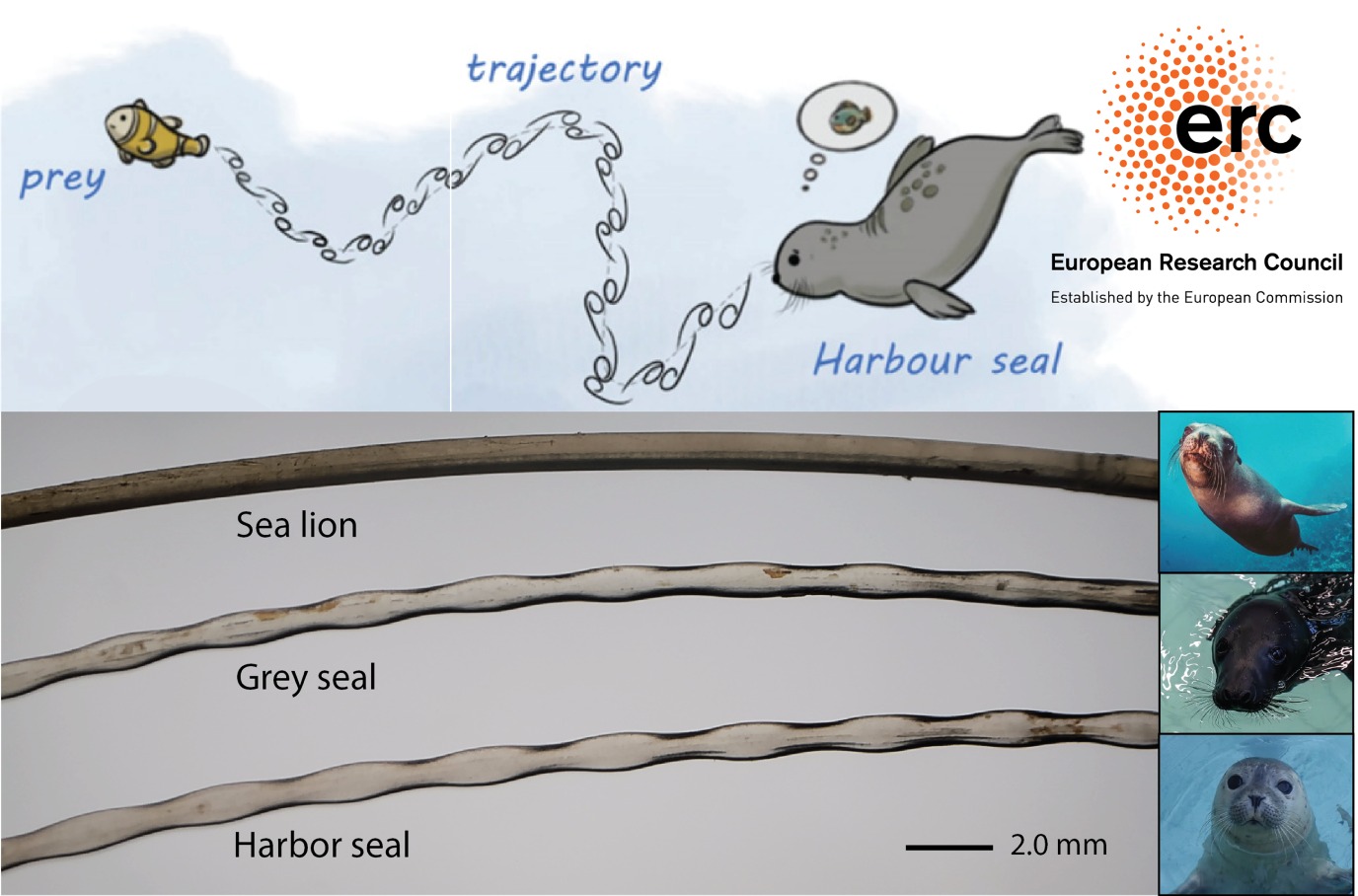Nature-Inspired Flow Sensing from Seal Whiskers - Phd student Engincan Tekin

Seals have evolved one of nature’s most sophisticated flow-sensing systems. Their whiskers allow them to detect subtle disturbances in water, enabling them to follow hydrodynamic trails and track prey even in complete darkness. These naturally optimized structures offer valuable insights for designing advanced sensing systems. In our ongoing research, we are experimentally investigating the flow-induced vibration (VIV) responses of whiskers from three seal species: harbor seal, grey seal, and sea lion. By comparing how each whisker geometry behaves under controlled flow conditions, we aim to better understand how shape influences sensing performance—and what that reveals about the evolutionary adaptations of each species. To reproduce the intricate shapes of real whiskers with high fidelity, we are using projection micro-stereolithography (PμSL)—a cutting-edge 3D printing technique capable of creating microscale structures with sub-10 micron resolution. This technology allows us to fabricate complex, biologically accurate geometries that traditional manufacturing methods cannot achieve, providing a powerful tool for studying nature-inspired design. By bridging biology, engineering, and advanced manufacturing, our work seeks to uncover fundamental principles of natural flow sensing and translate them into future technologies. These insights could eventually inform the development of sensitive, compact, and energy-efficient sensors for applications such as underwater navigation, environmental monitoring, or soft robotics.
